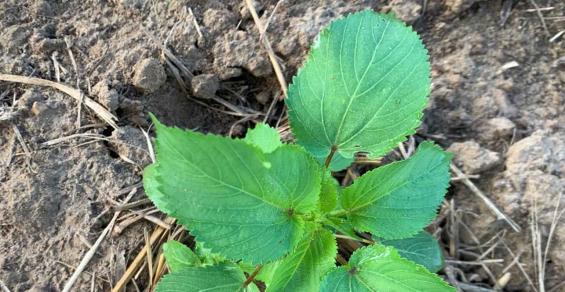I might have underestimated copperleaf’s potential threat, especially in field corn.
One of the weeds that I heard more about during the 2022 growing season was hophornbeam copperleaf. Over the last 23 years, I have listened to a few complaints from growers about this weed, mostly dairymen, but not enough of them to get on my weed radar. Maybe one complaint is one too many though?
My humble apologies! But my farm visits and phone calls/texts/e-mails this year led me to believe that I might have underestimated copperleaf’s potential threat, especially in field corn.
If you have noticed this weed on your farm in the past few years and not known exactly what iy was, here are a few fun facts about hophornbeam copperleaf:
Hophornbeam copperleaf is a summer annual member of the Euphorbiaceae (Spurge) plant family. Other common weeds in the Spurge family include tropic croton (Croton glandulosus) and wild poinsettia (Euphorbia heterophylla).
Copperleaf is native to North America.
Additional common names include pineland three-seeded mercury, hornbeam mercury, and rough-pod copperleaf.
Copperleaf gets its name from the fact that its leaves turn reddish-brown when mature.
A single hophornbeam copperleaf plant can produce up to 12,510 seeds/plant.
Copperleaf fruit capsules are dehiscent which means they split open at maturity to release seed. This aids dispersal by man, machine, and beast.
Seed can germinate over a wide range of soil temperatures and pH (5.1 to 10.9).
It is very likely that reductions in both the use of cultivation/tillage and the use of residual herbicides, coupled with relative glyphosate/dicamba tolerance have led to its increased occurrence.
As far as hophornbeam copperleaf control goes in field corn, it appears as though many of the commonly used herbicides (Liberty, Halex GT, Laudis + Atrazine, Callisto + Atrazine, Impact + Atrazine, 2,4-D) have pretty good activity.
The problem with hophornbeam copperleaf control however is that it is a later-emerging weed. It will come up long after these herbicides have been applied and/or played out (similar to annual morningglory). In fact, most of my calls is 2022 had to deal with the post-harvest control of this weed.
After reviewing some of the published literature (not much out there), it looks like Anthem Maxx (pyroxasulfone + fluthiacet) and Zidua (pyroxasulfone) might provide better residual control of copperleaf than the other Group 15 herbicides. Field corn growers might want to include one of these herbicides into their current programs to improve control (i.e. add to current POST treatment or maybe even lay-by?).
Although I do not believe (yet) that hophornbeam copperleaf will be become the next Palmer amaranth or tropical spiderwort, no doubt that it has become more common and deserves some attention. I will do my best in 2023 to collect some local data.
In the interim, field corn growers should continue to rely on the basic weed science commandments of starting clean, using multiple/overlapping residuals, making timely POST applications (weeds <= 3"), and implementing post-harvest management programs to reduce seed-rain.
As always, good weed hunting!



